Sjoef Classic BIS20M1 Handleiding
Bekijk gratis de handleiding van Sjoef Classic BIS20M1 (14 pagina’s), behorend tot de categorie Fiets. Deze gids werd als nuttig beoordeeld door 10 mensen en kreeg gemiddeld 4.4 sterren uit 5.5 reviews. Heb je een vraag over Sjoef Classic BIS20M1 of wil je andere gebruikers van dit product iets vragen? Stel een vraag
Pagina 1/14

1
Instrucons Manual
keep this manual
Handbuch
Bewahren Sie dieses Handbuch
Handleiding
Bewaar deze handleiding
S J O E F
Amsterdam
Made in China
in China hergestellt
Gemaakt in China
Bisshops BV
Herengracht 338
1016 CG Amsterdam
The Netherlands

2
EN - Manual
This manual provides instrucons for assembling and maintaining your new SJOEF
bicycle. Before assembling the bicycle, it is important to follow these steps.
• Remove the bicycle from the packaging and place all the parts together. Be
careful not to leave any parts inside the packaging.
• Check that all parts are present
• Assembly is intended for adults only
Tip: Are you having trouble with the assembly? Then please contact our customer
service.
The bicycles are manufactured to comply with European standards EN ISO-
8098:2014 or EN ISO-4210:2014. Please note: the manufacturer is not responsi-
ble for improper use or incorrect assembly of the bicycle.
Assembly
The bicycle can be assembled in a few simple steps. It is important to follow the
order of the instrucons in order to make the assembly as easy as possible.
Installaon of the saddle
1. Insert the saddle pillar into the seatpost.
2. Adjust the saddle to the correct height. Observe the safety mark on the
saddle pillar, which should disappear into the frame. The saddle is at the right
height when your toes touch the ground while standing sll. If possible, the
saddle should be adjusted so that the enre foot is on the ground.
3. Is the saddle at the right height? Lock the saddle by ghtening the saddle
bolt.
Installing the handlebar and stem (if required)
1. Insert the stem (including handbrake lever and bell if present) into the frame.
2. Observe the safety marking on the stem, it should disappear into the frame.
3. Posion the handlebar at the desired height and check whether it is perpen-
dicular to the front wheel.
4. Tighten the handlebar clamp and/or bolt.
Installing the pedals
PLEASE NOTE: there is an (L) on the le and an (R) on the right side of the pedal.
Incorrectly ghtening the pedal will render the bike unusable and will void the
warranty.

3
1. It is advisable to grease the ends of the pedals so that they can be replaced
easily in the future.
2. An L or R can be read o from the axle of the pedal. Use this to check which
pedal should be ed on the le and which on the right. Are there no L or R
on the pedals? Then the le pedal contains a marking in the form of a line.
3. Insert the right pedal into the crank and turn the pedal clockwise by hand
towards the front wheel. It should be easy to turn the pedal; if it is s, the
thread may be damaged.
4. Then turn the le pedal by hand counter-clockwise into the crank, also in the
direcon of the front wheel.
5. Finally, ghten the pedals even further using an open-end spanner.
Checking the cranksha nut
There are a number of bicycles in which the le-hand crank is secured with a
crank nut. Before using the bike, check that this nut is properly ghtened:
1. First ghten the nut with the 6 sides (clockwise).
2. Then ghten the lock nut (3 notches).
Fing the side wheels (if available)
1. Fit the support wheel arm on the rear axle against the locking plate which is
already ed on the rear axle). Alternavely, if present, secure the addional
plate on the rear frame with 2 screws.
2. Make sure that everything is rmly aached to the rear axle.
3. The quick release and protecon plate (if applicable) should only be slid onto
the rear wheel axle.
4. Screw the outer axle nut ght when the desired height of the side wheels has
been found. The side wheels should stay about 6 mm above the ground on
both sides.
Fing the front wheel (if necessary)
1. Posion the front wheel in the middle of the front fork.
2. Subsequently, ghten the nuts alternately while keeping the front wheel
straight in the middle of the front fork.
Installing the front mudguard (if required)
1. Unscrew the nuts with washers from the screw bolt.
2. Insert the screw bolt through the hole in the front frame/fork (make sure that
one ring remains at the front).
3. Fit the front reector or headlight (if any) between the ring and the front
end of the bolt. Ensure that the front reector (or front light) remains in the
correct posion by holding it with one hand.
4. If not already in place, push the hook hanging from the mudguard upwards.
Place the hook at the back of the hole in the frame/fork on the bolt.
5. Next, place the washer and nally ghten the nut.
6. Check whether the front reector (or lighng) is upright. You can then ghten
the nut rmly.
Product specificaties
| Merk: | Sjoef |
| Categorie: | Fiets |
| Model: | Classic BIS20M1 |
Heb je hulp nodig?
Als je hulp nodig hebt met Sjoef Classic BIS20M1 stel dan hieronder een vraag en andere gebruikers zullen je antwoorden
Handleiding Fiets Sjoef

20 Juni 2023

19 Juni 2023

17 Juni 2023

16 Juni 2023
Handleiding Fiets
- Cross
- Devron
- Coboc
- Axa
- Hase
- Kent
- Dahon
- Inmotion
- Spirit Fitness
- Ideal
- Sigma
- Athletic
- Crown
- Kawasaki
- Schwinn
Nieuwste handleidingen voor Fiets
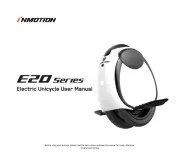
22 Juli 2025

14 Juli 2025

7 Juli 2025

5 Juli 2025
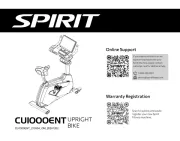
30 Mei 2025
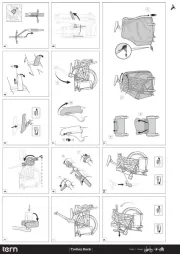
23 Mei 2025

21 Mei 2025
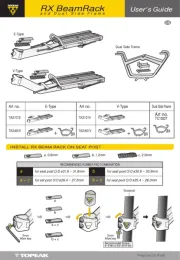
15 Mei 2025
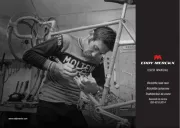
14 Mei 2025
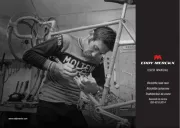
14 Mei 2025